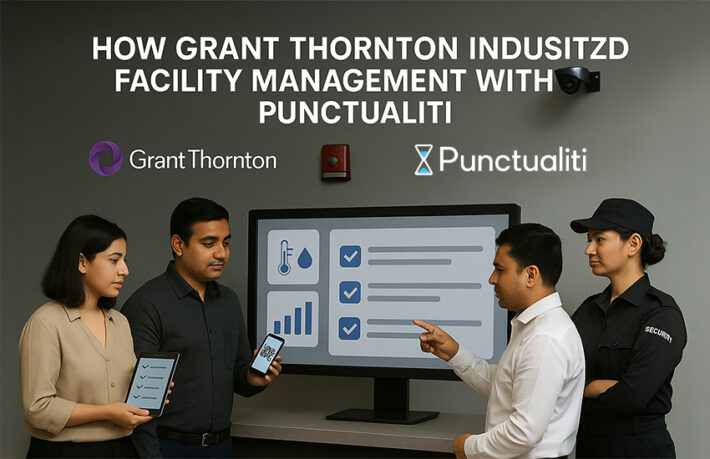Manual vs. Digital Asset Management: What’s Best for Your Facility?

Introduction: The Shift from Manual to Digital Asset Management
Facility managers are responsible for overseeing critical assets, equipment, and resources to ensure smooth operations. Traditionally, asset management relied on manual record-keeping, spreadsheets, and periodic inspections. However, as facilities become more complex, digital asset management systems have emerged as a more efficient solution.
This blog compares manual vs. digital asset management, highlighting their key differences, advantages, and which solution is best for modern facility operations.
1. What is Asset Management in Facility Operations?
Asset management involves tracking, maintaining, and optimizing equipment and resources to ensure maximum efficiency and lifespan. It includes:
- Equipment maintenance and servicing
- Inventory tracking and utilization
- Asset lifecycle management
- Compliance with safety and regulatory standards
While some facilities still rely on manual methods, digital solutions offer greater accuracy, automation, and real-time tracking.
2. Manual Asset Management: Challenges & Limitations
The Challenge:
Traditional asset management relies on physical records, spreadsheets, and periodic audits. While it may work for smaller facilities, manual tracking becomes inefficient as operations grow.
Limitations of Manual Asset Management:
- Time-Consuming Data Entry – Staff must manually update asset logs, increasing workload.
- High Risk of Errors – Paper records and spreadsheets can lead to miscalculations and lost data.
- Lack of Real-Time Updates – Assets must be physically checked, causing delays in maintenance tracking.
- Difficulty in Compliance Tracking – Audits require manual record reviews, increasing the risk of missing compliance deadlines.
- Poor Asset Utilization – No real-time insights lead to underused or overused equipment.
For large facilities, manual asset management is inefficient and prone to operational risks.
3. Digital Asset Management: Benefits & Advantages
The Solution:
A digital asset management system automates tracking, monitoring, and maintenance, ensuring greater efficiency and accuracy.
Benefits of Digital Asset Management:
- Automated Asset Tracking – Uses barcodes, QR codes, or RFID tags to monitor assets in real time.
- Centralized Data Storage – Cloud-based records eliminate paperwork and provide instant access to asset data.
- Preventive Maintenance Scheduling – Automated alerts for servicing reduce breakdowns and extend asset lifespan.
- Compliance Readiness – Digital logs make audits and regulatory reporting seamless.
- Optimized Asset Utilization – Identifies underutilized equipment to improve resource allocation.
With Punctualiti’s digital asset management platform, facility managers can monitor and optimize asset performance in real time.
4. Key Differences: Manual vs. Digital Asset Management
| Feature | Manual Asset Management | Digital Asset Management |
| Data Accuracy | Prone to human errors | Automated tracking with real-time updates |
| Time Efficiency | Time-consuming data entry | Instant updates and automated logging |
| Compliance Tracking | Manual reporting and documentation | Digital logs ensure audit readiness |
| Maintenance Scheduling | Reactive (fix when broken) | Preventive maintenance alerts |
| Asset Utilization Insights | No real-time data | Smart analytics optimize resource allocation |
| Scalability | Difficult to manage as facilities grow | Easily scalable for multi-location operations |
For businesses aiming to scale operations and improve efficiency, digital asset management is the superior choice.
5. When Should You Switch to Digital Asset Management?
Signs That Your Facility Needs Digital Asset Management:
- Frequent equipment failures due to missed maintenance
- Difficulty tracking inventory across multiple locations
- Slow and inefficient audits caused by manual logs
- Lack of asset performance insights for decision-making
- Rising operational costs due to inefficiencies and downtime
If your facility faces these challenges, adopting a digital asset management solution will significantly improve operational control and cost savings.
6. How Punctualiti Simplifies Asset Management
Punctualiti’s asset management platform provides:
- Automated asset tracking with barcode/QR scanning
- Preventive maintenance scheduling and alerts
- Real-time reporting for compliance and audits
- Multi-location asset management for large facilities
- Seamless integration with facility management tools
By switching from manual to digital asset management, facilities can reduce downtime, optimize resources, and enhance compliance tracking.
Conclusion: Digital Asset Management is the Future
While manual asset management may work for small-scale operations, it becomes inefficient as facilities grow. Digital asset management solutions offer:
- Improved accuracy and real-time tracking
- Automated maintenance scheduling to reduce downtime
- Faster compliance audits and reporting
- Optimized resource utilization
- Scalability for multi-location facilities
For businesses looking to streamline facility operations, investing in a digital asset management system like Punctualiti ensures long-term efficiency, cost savings, and compliance readiness.


